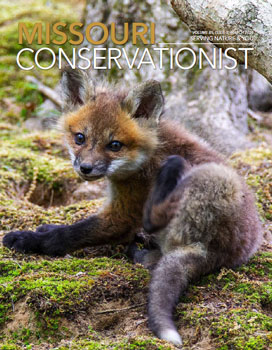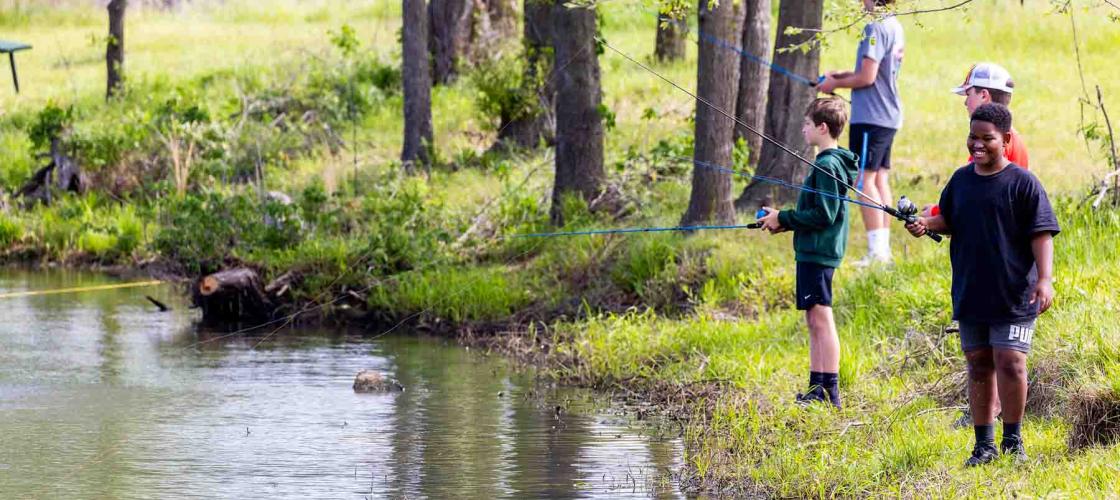
A new idea has taken hold in one Missouri community that will have long-lasting effects in the lives of students and teachers alike. The Boone County Nature School, a partnership between MDC and the Columbia Public School District, will fully open its doors in August.
Connecting with Nature
Most of us can recall a unique experience that took place in nature. It may have been while viewing wildlife along a woodland trail or exploring a gurgling stream tucked in a deep, dark forest. Whatever the experience, most of us can remember the sights, sounds, smells, and feelings of visiting a special place in nature. The connections we make with the natural world can be some of the longest lasting memories we carry through life.
You might have explored solo or been accompanied by a mentor, teacher, friend, or family member. In today’s busy world, it is easy for us to get distracted, lose our sense of place, and become disconnected from those natural places and experiences. It is the same for young people to whom those connections are more important than ever.
For many young people, nature is unfamiliar, sometimes scary, and something interacted with through a computer or phone screen. In his book Last Child in the Woods: Saving Our Children from Nature Deficit Disorder, Richard Louv remarked, “Time in nature is not leisure time; it’s an essential investment in our children’s health.” That investment can be made by all of us, young and old, and the benefits of being in nature are many and varied.
“Learning should not be confined to the four walls of a classroom,” said Peter Stiepleman, recently retired Columbia Public Schools superintendent. “As we began exploring new ways to engage and inspire children, we asked ourselves, ‘What if we could create an incredible learning environment right here in mid-Missouri?’”
Developing a Sense of Wonder
As discussions began between MDC and Columbia Public Schools, a steering committee was formed and met for the first time in September 2018. Leading the effort and staff from their respective organizations was Stiepleman and MDC Director Sara Parker Pauley.
“It is important for us today to inspire future generations of conservationists,” Director Pauley said about the Boone County Nature School. “Here in Missouri, we’re lucky to inherit such a wide and unique tapestry of natural resources and habitats. This would not be possible without an engaged public that truly cares for our fish, forest, and wildlife resources. The Boone County Nature School will be a place for young people to develop a sense of wonder and stewardship of nature.”
Others rounding out the new committee and supporting the effort included Marilynn Bradford and Dave Murphy, former members of the Missouri Conservation Commission. Murphy, who is also a former Columbia science teacher and coordinator, had a special connection and love of the project.
“In many significant ways, the modern history of conservation began right here in Boone County on September 10, 1935,” Murphy said. “Teaching children about their great legacy can best be accomplished by providing firsthand experiences at the Nature School. Nature is necessary. It is the source of our health, well-being, and livelihood. This opportunity for every elementary student in Boone County — and many teachers — will prove to be the most visionary and effective path forward, come what may.”
Former Columbia School Board President Jan Mees and her husband, Bill, representing the Columbia Chapter of the Audubon Society, also loved the idea of helping students engage in nature.
“Columbia Audubon Society’s pledge of financial support for the school springs from its belief that for our natural world to thrive, it requires understanding, appreciation, and stewardship, leading the youth of today in developing a conservation ethic for the future,” Bill said.
Members of the committee were given the task of shaping the concept of what a nature school could be. Staff created a planning document to encompass natural features and infrastructure developments that would be needed at the school.
Initial planning efforts culminated in an agreement between MDC and Columbia Public Schools to operate the Nature School on MDC property. At this same time, a community fundraising campaign also began. No project of this scope would be successful without members of the community at all levels, and many contributed financially.
A Tapestry of Wonders
Three streams — Turkey, Bass, and Bonne Femme — come together in an extraordinary place in Boone County. The Boone County Nature School campus sits on a 111-acre addition to Three Creeks Conservation Area (CA) donated in 2019 by Vicky Russell and the late Hank Waters. Russell and Waters, who both enjoyed long careers in media and publishing in the Columbia area, cared deeply about sharing nature with others. The family planted over 40,000 trees on the land and wished to preserve the place, which had been their home since 1981.
“It would have become a subdivision, and we’ve got too many of those,” Waters said in a 2019 interview. The pair wanted to share this special place, and through the nature school, they would see that reality come to life.
Bordered by U.S. Highway 63 to the east, the communities of Columbia to the north, and Ashland to the south, the area known as Three Creeks has a deep rich past. The ancient Hopewell culture flourished here along the big rivers between 100 B.C.E. and 500 C.E., leaving behind many earthen mounds that dot the landscape even today. Later, Native Americans, such as the Wahzhazhe (Osage) and Niutachi (Missouria), called the area home. In the early 1800s, the surrounding uplands saw some of the first farms and agricultural crops grown. After the Civil War, these rough hills and hollows were settled by formerly enslaved families, and the area was the boyhood home of famous Missourian Tom Bass. Bass, himself born enslaved on a Three Creeks plantation, explored this area in his youth. He later became a famous horse trainer of the early 20th century, invented the Bass Bit, and in 1905, founded the American Royal Horse Show in Kansas City.
The area today is a tapestry of geological wonders and natural habitats — including streams, caves, springs, forests, and trails — and abundant wildlife. The area is more reminiscent of the deep Ozarks rather than the typical Missouri River hills. At the center of this area is the nearly 1,600-acre Three Creeks CA, an area which was first acquired for public recreation in 1983. It’s on this canvas that the Boone County Nature School was built.
Place-Based Education
Place-based education is an approach where students learn through the lens of their local community or “place.” Students learn what is unique to their place in the world by studying its culture, history, art, economy, and nature. The principles of this type of education include moving outside the classroom and learning in the community and environment. First-hand personal experiences are favored over reading examples from a textbook. This inquiry-based learning requires students to formulate questions, generate ideas, and record observations. Exploration and experiences expand student involvement resulting in higher student engagement, stronger connections to community, increased curiosity, deeper levels of design-thinking, and problem solving.
“Place-based education utilizes the rich ecology and culture of the local community as the framework for learning,” said Joe Brown, Boone County Nature School’s first teacher. “It lifts ideas and information off the page and places them directly into students’ hands.”
For example, learning about ecology in a science class could be contextualized within a local ecosystem, such as a nearby forest, prairie, or wetland. Students learning about circumference in math could do so by measuring trees in a local forest. This forest could also serve as the setting for creative writing. Students in an art class learning about shading could use the harsh shadows found under the dense leaf canopy within the forest. Teachers share knowledge of native plants and how indigenous people, who first lived on this land, used them in their daily lives and how that relates to the area today.
“Giving teachers the opportunity to learn about nature and educating them in the Discover Nature Schools curriculum is a great way to provide the skills and confidence needed to pass that education to students,” said MDC Conservation Educator Jenna Stiek. “The Discover Nature School curriculum began in 2009 and is aligned to meet current state learning standards in many areas.”
Nature Exploration
This August, the Nature School will open its doors to 2,200 fifth graders. Each session will be attended by four classes of students along with their teachers, and every day 100 students will engage in nature exploration as they rotate through seven days of education in three separate sessions. Teachers and students will cover a diverse suite of topics, including themes such as Nature School Expedition, Ecosystem Exploration, Connecting to Our Roots, Cycles in the Ecosystem, Our Changing Planet, Life Through the Seasons, and Agents for Change — Building a Better Place. Unique, meaningful cross-curricular learning opportunities and developing proficiency in various outdoor skills will inspire students as they create lasting change in their community and participate in a sustainability project benefiting their place.
When not in the field learning, students and teachers will have access to the new Nature School classroom building, which houses classrooms, meeting spaces, and displays a truly unique design by PWArchitects Inc. of Columbia. While on the Nature School grounds, students will use educational areas, such as a pavilion and uniquely designed council house, ponds for fishing, archery range, and many miles of trails for exploration.
What will the future hold for this new conservation education endeavor? If the enthusiasm shown by teachers, students, and the community are any indication, the future looks very bright for the Nature School. Those educators, community leaders, and conservation professionals who were instrumental in its formation want this school to be a national model for how education should be done. Moving outside the typical framework and structure of what we see as a school to sitting quietly with students on the prairie, by that gurgling stream or alongside a woodland trail, and ultimately listening to the lessons nature has for us all.
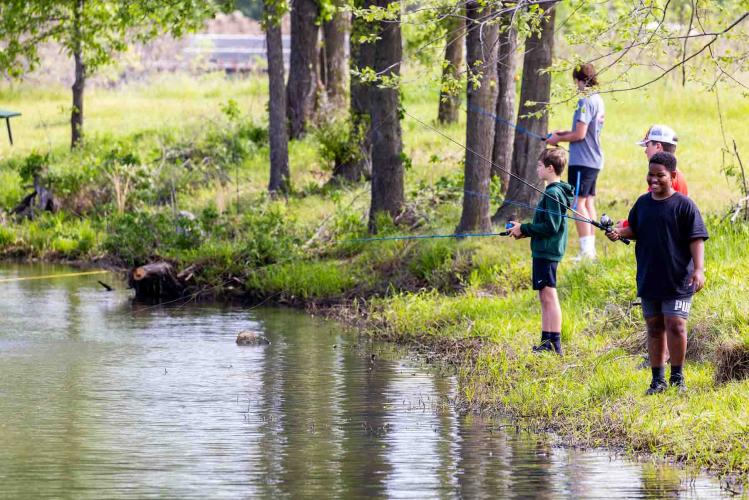
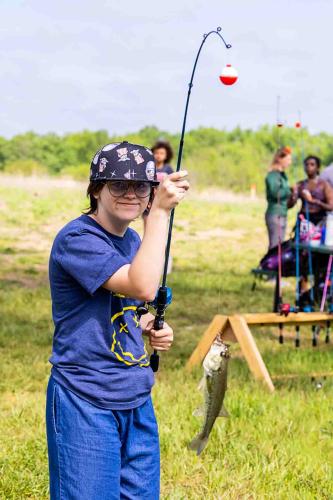
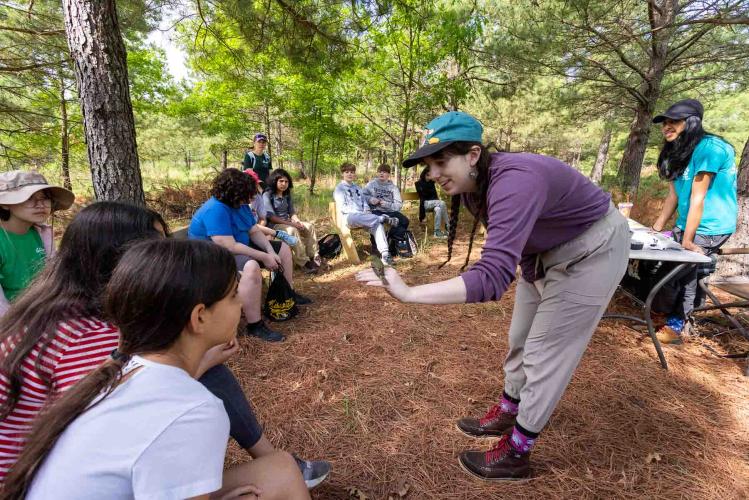
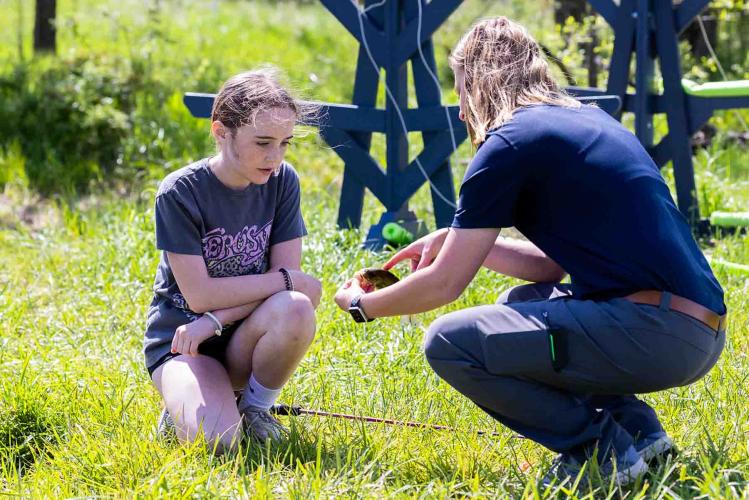
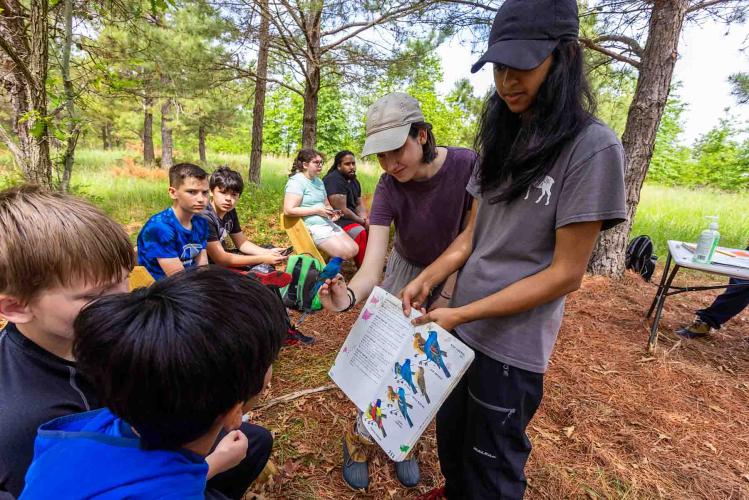
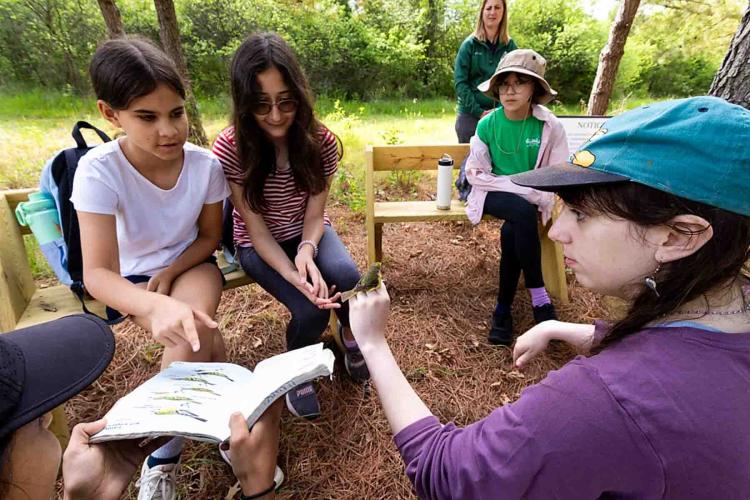
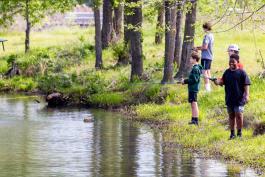
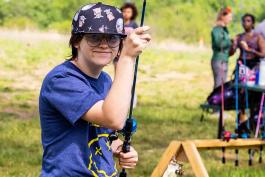
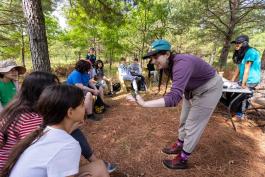
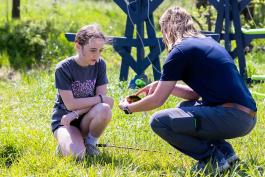
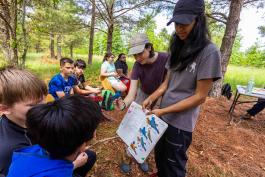
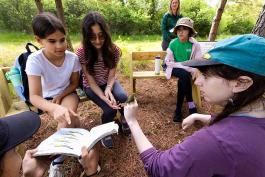
Also In This Issue
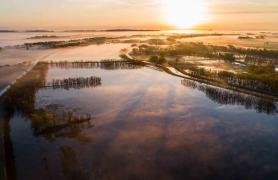
Spring’s renewing splendor ushers in new beginnings.
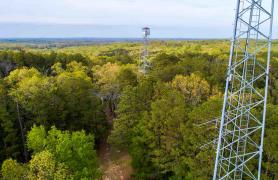
Tracking birds and growing partnerships across the hemisphere.
And More...
This Issue's Staff
Editor - Angie Daly Morfeld
Associate Editor - Larry Archer
Photography Editor - Cliff White
Staff Writer - Kristie Hilgedick
Staff Writer - Joe Jerek
Staff Writer – Dianne Van Dien
Designer - Shawn Carey
Designer - Marci Porter
Photographer - Noppadol Paothong
Photographer - David Stonner
Circulation – Marcia Hale






















